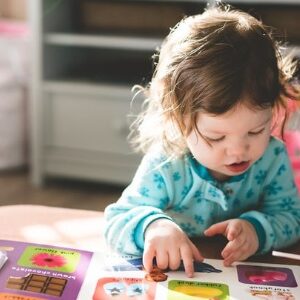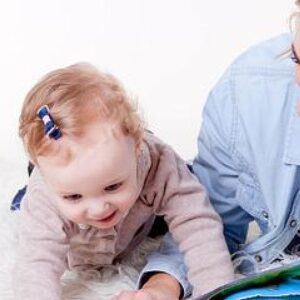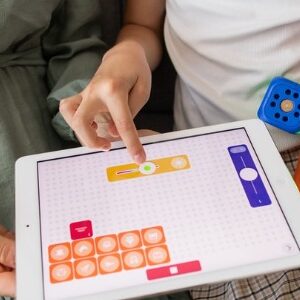Understand How Early Childhood Development in 8 Specific Areas Is Critical to School Success
We have identified eight key developmental areas that play a critical role in a child’s success in preschool, kindergarten, and beyond.
Understanding more about each of these 8 key developmental areas will help you assess your child’s readiness to begin school and foster his growth in each area. For each of the 8 key developmental areas, I provide:
- An explanation of the developmental area, including a discussion of how and why that area is critical to success to in school.
- Tips for accelerating your child’s development in that area. This includes time-tested strategies, activity suggestions, and advice for correcting common problems.
- A summary of what will be expected of your child during preschool and kindergarten.
8 Key Developmental Areas
Classroom Expectations
Just as all children develop on unique schedules, all schools follow a unique curriculum and all teachers have their own expectations for the students in their classes. However, the following is intended to provide you with a basic explanation of what skills most teachers expect most students to have at the beginning of preschool and at the beginning of kindergarten. This information is not intended to be used as a checklist of skills for your child to master by a specified time. Instead, it is intended to give you a glimpse inside the classroom.
After reviewing the classroom expectation for each of the 8 Key Developmental Areas, I suggest you complete the Kindergarten assessment. The results of that assessment will include a detailed discussion of your child’s strengths and weaknesses in all 8 Key Developmental Areas. This will help you to create a plan for working with your child on areas in which he may need additional practice to master all of the skills required to start school prepared to succeed.
What is school readiness?
I confess that the term ‘school readiness’ does irk me. Parents feel under to focus on the academics so practical elements are overlooked. Here’s why the basics shouldn’t be overlooked…
In my opinion, school readiness means being independent in practical tasks such as managing zippers or recognizing belongings. These are the skills that will help a child to transition smoothly from home life to school. With reception classes often at full capacity, teachers and their classroom assistants need to focus their attentions on the children who need it the most.
I have based this guide on my own experiences and the experiences of colleagues. My eldest is now in his final year of elementary school; my middle child will be starting school in 2020.
I truly believe that school readiness should mean developing independence. Being able to open lunchboxes, fasten shoes and find belongings will help boost confidence. It also allows children to focus on the true purpose of school – hopefully heaps of learning through play!
Things to consider
I’ve broken down this guide into 9 general sections with advice on how to tackle each step. I really want to stress that your child doesn’t need to be confident in all of these areas before school. This list of questions will help you to identify areas where your child might need a little extra help.
In the lead up to starting school, there should be plenty of opportunities for you to communicate with the school. Please make them aware of any concerns you have so that they can tailor advise to your child’s specific situation.
I am a British school teacher and parent, so school readiness in this instance relates to children who are aged 4 / 5 . Having said that, most of this information can start to be introduced from the age of 3.
As with all posts on this website, the advice applies to the average child. What do I mean by that? Children who do not have special educational needs or physical disabilities.
Is your child able to go to the toilet independently?
Can you child go to the toilet by themselves? Can they wash their hands with soap? Or perhaps even more importantly, are they out of nappies?
The average child is potty trained between the ages of 2-3. Medical issues notwithstanding, one of the main school readiness goals, in my opinion, is getting your child out of nappies.
Part of potty training should be about fostering independence, which includes wiping correctly AND washing hands correctly. In the beginning, this takes a lot of effort and time.
I recommend packing a spare set of pants as accidents can happen!
Can your child take care of their belongings?
Please make sure that you DO LABEL ALL BELONGINGS so that your child has a fighting chance of finding them. There are plenty of companies you can find that specialize in funky labels that will help your little one out.
Name recognition plays a big part in children being able to recognize their own belongings; there are plenty of activities available under the ‘preschool’ section of the website. However an additional distinctive key-ring or ribbon should help them find their things quickly too.
Can your child open their lunchbox?
There are so many cool lunchboxes around- bento boxes have become hugely popular BUT is your child able to open one? If they aren’t, i’d recommend practicing before school starts.
Opening fiddly catches or screw top yogurts usually requires fine motor skills. There are plenty of fine motor activities in the preschool section of the website.
Is your child able to cope with routines?
An school, there is a lot timetabled during a typical day so ask for a copy of the schedule.
Start having snacks and lunches at the same time as school so that your little one knows when to expect it. Whilst I certainly wouldn’t expect a four year old to be able to tell the time, you could try gently introducing the concept, e.g. ‘It’s 12 o’clock so now we are going to wash our hands and get ready for lunch.’
Can your child dress independently?
This covers everything from dressing and undressing for PE to retying shoelaces that have come undone. Putting on a coat can be super tricky for little ones so whilst it might seem time saving to help with zippers and buttons in the short-term, it becomes a struggle at school.
Allow time for your child to practice getting changed in a non-pressured environment – let them try to zip their coat and put on shoes without you doing it for them. Like any skill, it just takes a little time and practice.
In the early years, choose the shoes and coats that are practical rather than super fashionable. Check the zips – do they work easily? Opt for velcro shoes over laces to make life a little easier all-round.
Is your child emotionally ready for school?
Allow plenty of prep time so that school is not a shock: attend school fetes, read books and talk about what ‘school’ means. Arrange play dates with children who will also be in the same class so that they have a friend to look out for on the first day.
Schools usually arrange home visits and transition days for new attendees and in the case of children with additional needs, arrangements made so that new students can get an insight into routines and procedures. If for any reason, the school doesn’t offer a transition day, i’d recommend asking for a tour.
Can your child communicate their needs?
For a shy child, communicating needs such as going to the toilet or having a tummy ache might seem like a monumental challenge.
If your little one has a tendency to be shy around other adults, it’s worth just reminding them that it’s okay to ask questions or to tell their teacher / teaching assistant what they need. Informing the teacher so they can keep an eye out for your child’s well-being and build up a rapport.
Can your child work with others?
School children are often placed in small groups – either so that resources can be shared or so that team-building skills can be worked upon.
If your child tends to snatch objects from others, it’s time to start working on the concept of patiently waiting for their turn. On the flip-side, you also don’t want your child to easily surrender the toy they are playing with. Sharing can be complicated!
One way to tackle this issue at home is to try commentating or sportscasting – for example, ‘Johnny is playing with the cow right now but he will give it to Sarah once he has finished.’
Try not to encourage the surrender of toys because the other child is crying. It sends out confusing signals which may eventually end up meaning that your child always gives into their peers a little too easily. Helping your child understand how to share fairly will subsequently benefit their ability to work in a team.
Can your child listen and follow directions?
School means so many instructions – often all at once! It’s not unusual for teachers to issue two or three step instructions to their class. For example, ‘I want you to take a drink, put on your coats and line up for break time.’
These instructions will be repeated but it’s worth practicing at home too. I often do instructions in multiple steps, such as, ‘I want you to go to the toilet, then wash your hands with soap.’
To encourage active listening, get your little ones to look at you when you talk to them. If they are playing with a toy or watching TV, chances are they won’t really hear you!









